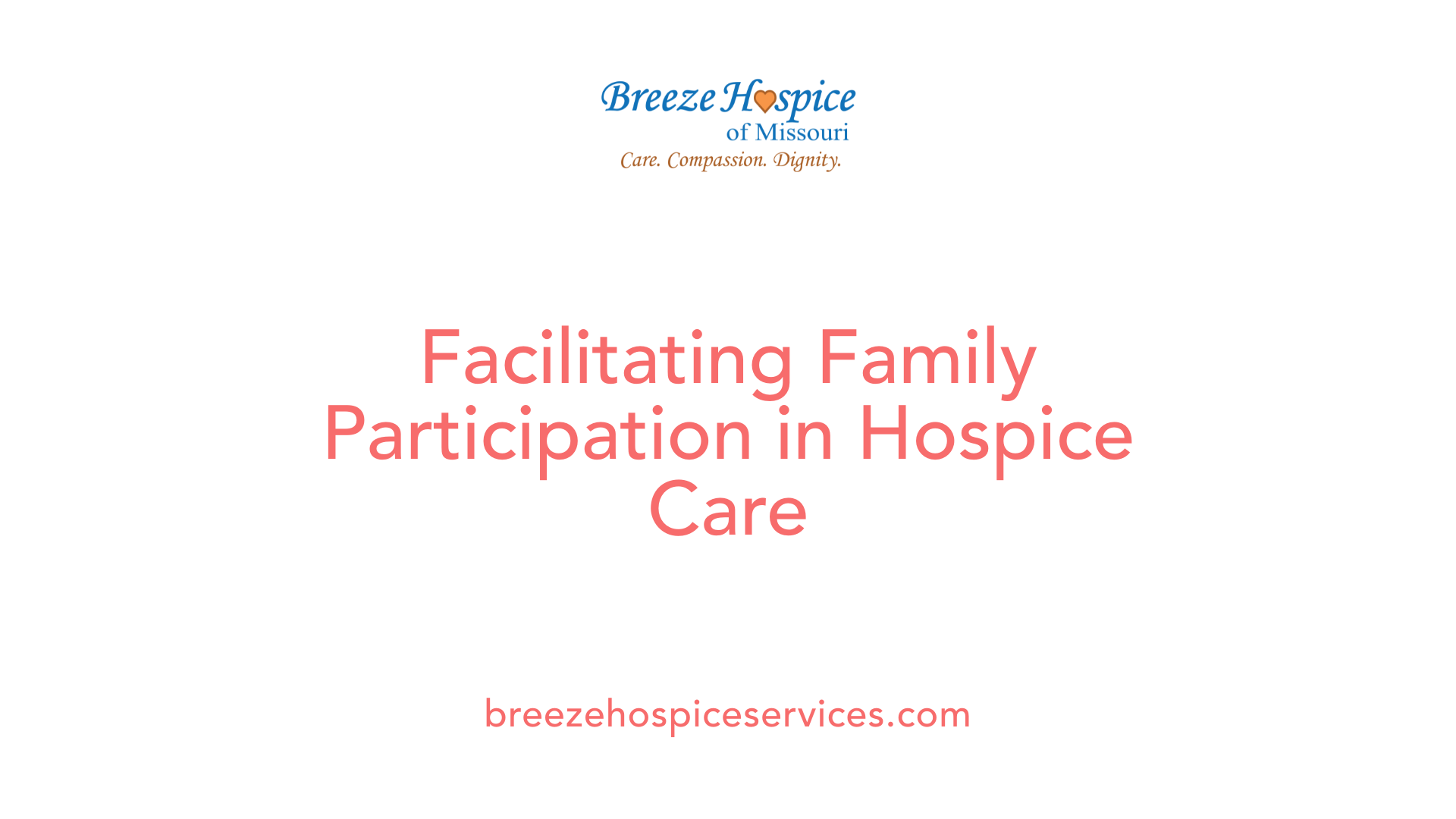Family Engagement in Hospice Care
May 20, 2025
The Critical Role of Families in Ensuring Quality Hospice Care

Understanding the Foundations of Family Engagement in End-of-Life Care
Family engagement is a cornerstone of hospice care, influencing patient comfort, care quality, and emotional well-being. Recognizing the importance of family involvement, healthcare providers increasingly incorporate strategies that foster collaboration, communication, and shared decision-making. This article explores the multifaceted roles of families in hospice, the methods to enhance their engagement, and the evidence supporting their pivotal contribution to dignified and personalized end-of-life experiences.
The Significance of Family Engagement in Hospice Outcomes

Why is family engagement important in healthcare?
Family engagement plays a vital role in healthcare because it improves communication and collaboration among patients, families, and healthcare providers. When families are actively involved, they help ensure that care aligns with the patient's preferences and needs. Research supported by the Agency for Healthcare Research and Quality (AHRQ) highlights that family participation leads to better understanding of treatment options, increases adherence to care plans, and enhances overall patient satisfaction.
Engaging families fosters safer, more effective healthcare environments by encouraging transparency and shared decision-making. It supports the development of trust and understanding, which are critical in navigating complex medical decisions, especially at the end of life. Collectively, these efforts contribute to improved health outcomes and a more patient-centered approach to care.
Overall, integrating family engagement into healthcare systems is essential for delivering high-quality, compassionate care that respects individual values and promotes better health outcomes.
Barriers and Enablers of Family Engagement in Hospice Settings

What are challenges and barriers to family engagement in hospice settings?
Family involvement in hospice and end-of-life care offers numerous benefits, including emotional support, better communication, and higher satisfaction with care outcomes. However, several challenges can hinder active participation.
Emotional difficulties are a significant barrier. Witnessing a loved one's decline and managing grief can be overwhelming, leading some family members to withdraw from caregiving tasks or decision-making processes. Additionally, relational issues such as ongoing family conflicts or unavailability due to personal circumstances can limit engagement.
Logistical hurdles also play a role. Scheduling conflicts, such as work commitments or geographic barriers, can prevent family members from being present when needed. Healthcare settings may lack the administrative support necessary to coordinate family involvement effectively. Limited training for healthcare providers on how to facilitate family participation further compounds the issue.
Cultural norms and misconceptions can delay or prevent early engagement. Some families might perceive hospice care as giving up hope or view discussing death as taboo, which discourages open conversations about preferences and wishes.
Structural and systemic barriers include inadequate infrastructure to support family-centered approaches. Clear delineation of responsibilities and sufficient reimbursement structures for family participation are often lacking, making it difficult to sustain active engagement.
Addressing these barriers requires a comprehensive approach that involves targeted education to dispel misconceptions, system-level support to facilitate balance between professional care and family involvement, and normalization of early and active participation in hospice care.
How can hospice teams foster better family engagement overcoming these barriers?
Hospice providers can implement several strategies to enhance family participation. Improving communication is fundamental; healthcare professionals should develop skills to discuss prognosis, care options, and patient wishes openly and compassionately.
Offering education about disease progression, care plans, and the importance of family involvement helps demystify hospice services and encourages early participation. Providing resources like pamphlets, workshops, or counseling services creates an environment where families feel supported and informed.
Facilitating regular family meetings ensures ongoing dialogue, allowing families to express concerns and preferences clearly. Counseling and support groups can assist family members in managing emotional and relational challenges, promoting resilience and better involvement.
Encouraging family participation in decision-making emphasizes respecting patient autonomy and shared goals for care. This approach builds trust and ensures that care aligns with the patient's values.
System-level adjustments such as flexible scheduling of visits, caregiver training programs, and dedicated family support services can mitigate logistical barriers. Addressing misconceptions through community outreach and education campaigns helps to reshape cultural perceptions about hospice and death.
Creating a culture of openness, cultural sensitivity, and mutual respect ultimately fosters an environment conducive to active family engagement. This leads to improved satisfaction, better emotional support for patients and families, and overall higher quality of care in hospice settings.
Responsibilities, Support Needs, and Strategies for Family Caregivers

What are the responsibilities and support needs of family caregivers during hospice care?
Family caregivers play a vital role in providing comprehensive support for their loved ones during hospice care. Their responsibilities include managing personal and medical tasks such as assisting with bathing, dressing, administering medications, and monitoring symptoms. They also handle daily household activities like cooking, transportation, and ensuring a safe environment.
Beyond physical care, caregivers serve as emotional and advocate figures, communicating with healthcare professionals and supporting the patient’s psychological and spiritual needs. They need adequate education about medical procedures, symptom management, and understanding hospice resources like respite care and counseling. Emotional support is essential, as caregiving can be stressful and emotionally taxing.
Addressing these needs involves providing access to training, emotional counseling, and community resources. Ensuring caregivers are supported helps sustain their capacity to deliver compassionate, effective care while maintaining their own well-being and avoiding burnout.
Fostering a Culture of Compassion and Collaboration
Supporting family engagement in hospice care is essential for achieving dignified, patient-centered, and emotionally supportive end-of-life experiences. Education, communication, and systemic support are pivotal in overcoming barriers and empowering families to participate actively. As research underscores, family involvement improves care quality, patient comfort, and emotional well-being—making it a fundamental aspect of hospice philosophy. Cultivating a compassionate approach that respects cultural norms, provides necessary resources, and encourages early, open conversations enhances the effectiveness of hospice services. Ultimately, fostering a shared commitment to holistic, family-centered care ensures that patients can endure their final journey with dignity, surrounded by love, support, and respect.
References
- Hospice and Family Involvement with End-of-Life Care
- Importance of Family Involvement in Hospice Care
- How Home Hospice Care Fosters Patient and Family Engagement ...
- How home hospice care facilitates patient and family engagement.
- Rapid Review of Family Caregiver Engagement in Hospice and...
- family-role-in-hospice - Salus Homecare
- Family's Role in Hospice Care Explained
- 'Someone must do it': multiple views on family's role in end-of-life care
- The Vital Role of Family Involvement in Hospice Care
- Family's Role During Hospice - Santé Cares



































































































